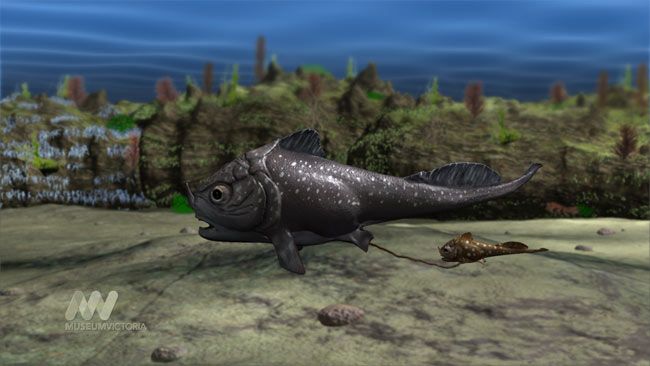Mystery of Ancient Extinction in Earth's Oceans Revealed

About 375 million years ago, the diversity of species in the Earth's oceans plummeted — not because more species were going extinct, but because fewer new groups of organisms were forming. A new study identifies a culprit: invasive species.
The crisis of the Late Devonian Period is typically considered to be one of the "Big Five" mass extinctions; however, this terminology is inaccurate, according to Alycia Stigall, the study researcher and an associate professor of geology at Ohio University.
During a given point of time, some species are going extinct, while others are being created, a process called speciation, according to Stigall.
"During normal intervals, those numbers offset one another," she said.
During a mass extinction, like the one at the end of the Cretaceous Period when the dinosaurs disappeared, the rate of extinction exceeds the rate at which new species are created. Scientists have known for some time that the Late Devonian was different, according to Stigall.
During the Devonian Period, which began about 416 million years ago, most life still lived in the seas, where armored fish, such as the 4-ton Dunkleosteus terrelli (thought to be able to tear a shark in two) dominated.
Life on land was limited, but by the time the Devonian Period had ended, the first seed plants, forests, insects and amphibians had emerged. The crisis, however, primarily affected marine life.
Sign up for the Live Science daily newsletter now
Get the world’s most fascinating discoveries delivered straight to your inbox.
Continents were also moving together, colliding and forming mountain ranges, and behind them, depressions. Sea levels were rising, and many inland oceans appeared. This geographic change allowed some species to spread and establish themselves in new environments, but their presence prevented native species from diversifying.
To better understand what had happened with speciation rates, Stigall created detailed evolutionary trees for four groups of organisms: clams, a type of predatory armored shrimp and two types of brachiopods, which are shelled, filter-feeding organisms. (Unlike a clam, the two shells of a brachiopod are different in size, and brachiopods use a specialized structure called a lophophore instead of gills to feed and breathe.)
These family trees, which incorporated about 130 species, allowed her to tell when and where new species emerged, as well as when they went extinct. For example, one species of deep-water brachiopod, called Schizophoria impressa, evolved in what is now the New York state area, then with the next major rise in sea level, the same species appeared in the Iowa basin, and with the subsequent rise, it invaded the New Mexico basin.
Most new species arise because of a process called vicariance. This occurs when a geographic barrier such as a mountain range or river divides a population, and the subpopulations evolve into new species. However, during the Late Devonian many invader species gained access to new habitats, and their presence prevented new species from forming, regardless of the barriers present. This process is likely happening now, to Stigall.
"We have both a potential problem with speciation and a clearly documented problem with extinction," Stigall said.
In fact, the Earth is believed to be in the midst of a sixth major extinction event, thanks to human activities that have fragmented natural habitat and caused many species to disappear. Humans have also transported invasive species around the world and created environments where invasive species that can handle a variety of settings – think pigeons, raccoons and rats – thrive.
Modern speciation rates are difficult to calculate because the process takes 10,000 to 50,000 years, she said.
The study, which was funded by the National Science Foundation, was published in the journal PLoS ONE on Dec. 29.
- 25 Amazing Ancient Beasts
- The World's Biggest Oceans and Seas
- Mass Extinction Threat: Earth on Verge of Huge Reset Button?
You can follow LiveScience writer Wynne Parry on Twitter @Wynne_Parry.












